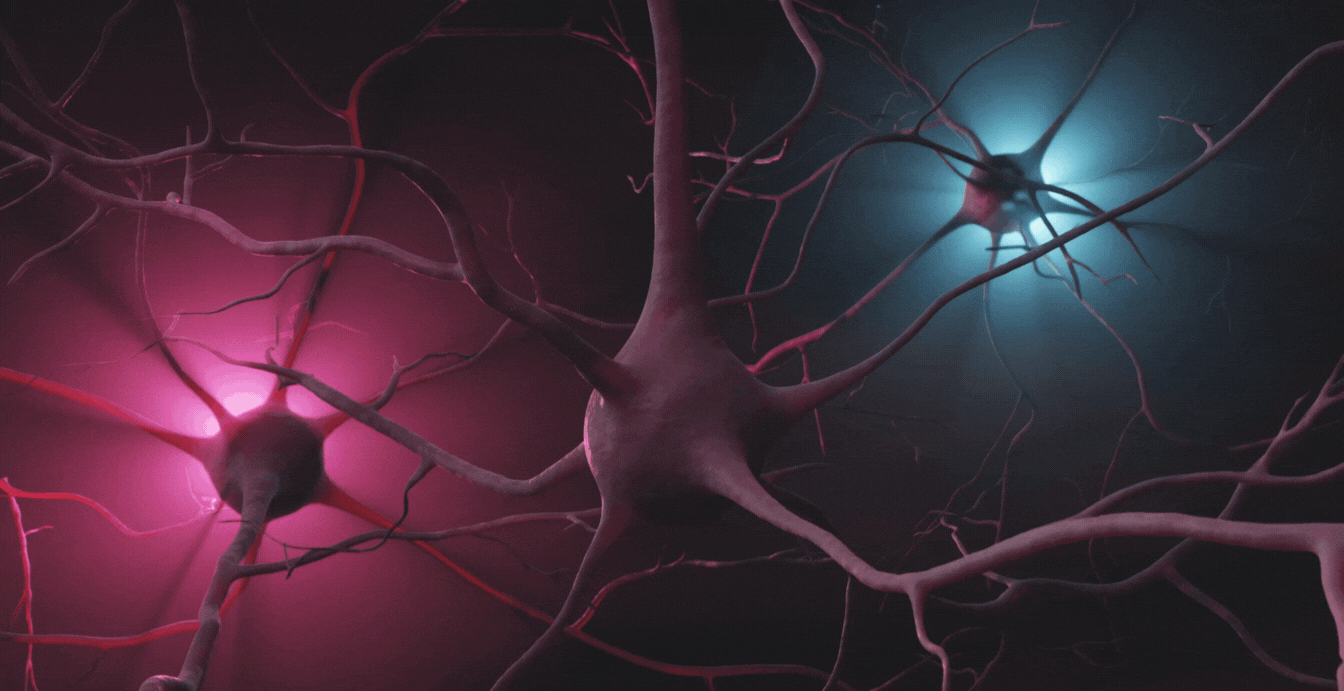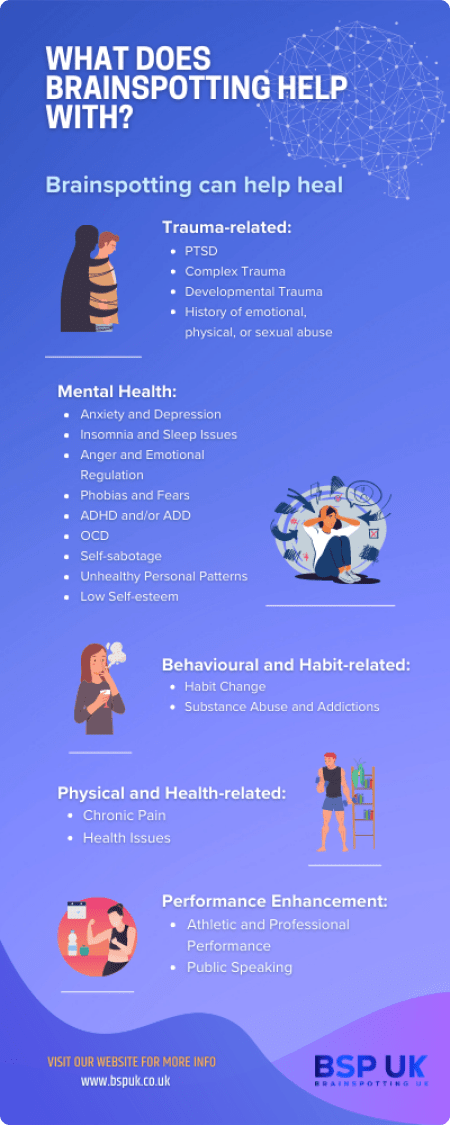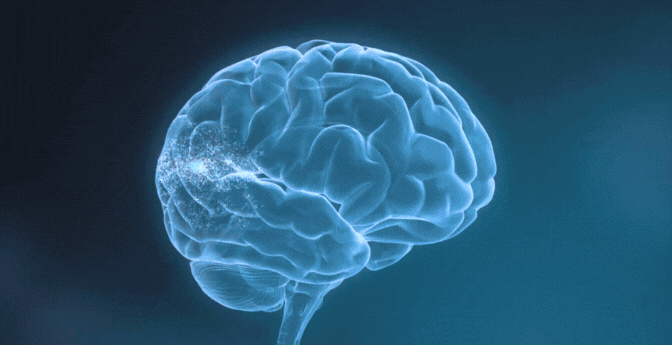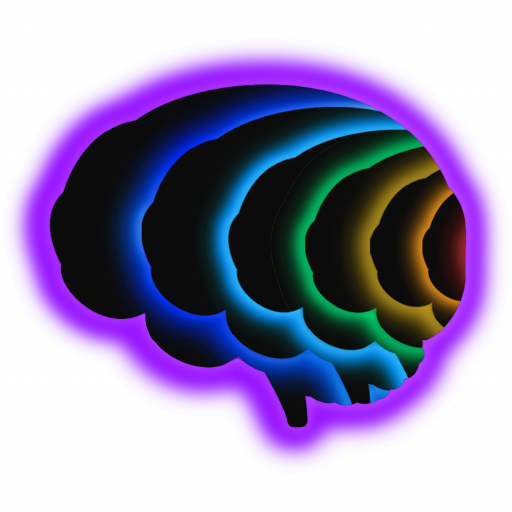Brainspotting can be effective in treating a wide range of psychological and emotional issues. While individual experiences may vary, Brainspotting has shown promise in addressing the following concerns:
Trauma: Brainspotting is particularly well-suited for trauma processing and healing. It can help individuals process and release the emotional impact of various types of trauma, such as childhood abuse, accidents, natural disasters, or combat-related experiences.
Anxiety and Phobias: Brainspotting can assist in alleviating anxiety disorders, including generalized anxiety disorder, social anxiety, panic disorder, and specific phobias. It helps individuals identify and process the underlying fears and triggers contributing to their anxiety.
Depression: Brainspotting can be beneficial for individuals experiencing depression by facilitating the release of underlying emotional pain and promoting a sense of emotional resilience and empowerment.
Addiction and Substance Abuse: Brainspotting can complement addiction treatment by addressing the underlying emotional issues and trauma that may contribute to addictive behaviours. It aids in resolving cravings, reducing triggers, and supporting relapse prevention.
Performance Anxiety: Brainspotting can help individuals overcome performance anxiety in various domains, such as sports, public speaking, artistic performances, or academic pursuits. It assists in accessing and processing the underlying fears and self-limiting beliefs that hinder performance.
ADD/ADHD: Brainspotting works deep into the subcortex which interfaces with the central nervous system. Through this access point, the client can work into the deeper causes that influence their impulsivity, inattention or hyperactivity. Brainspotting appreciates, but seeks to work beyond, oversimplified diagnostic terms to meet the person’s individual presentation which is always as unique as a fingerprint.
Grief and Loss: Brainspotting can support individuals in navigating the grieving process and healing from the emotional pain associated with loss. It allows for the release of suppressed emotions and facilitates the integration of the loss into one’s life.
Self-Esteem and Personal Growth: Brainspotting can promote personal growth and enhance self-esteem by helping individuals uncover and process self-limiting beliefs, past traumas, and emotional blocks that hinder their development and self-worth.
Stress Management: Brainspotting techniques can be effective in managing stress and promoting relaxation. It helps individuals identify and process the underlying sources of stress and develop healthier coping mechanisms.
It’s important to note that while Brainspotting has shown promising results for these issues, each individual’s response may vary. It is recommended to consult with a certified Brainspotting therapist to determine if it is the appropriate approach for your specific needs and circumstances.









